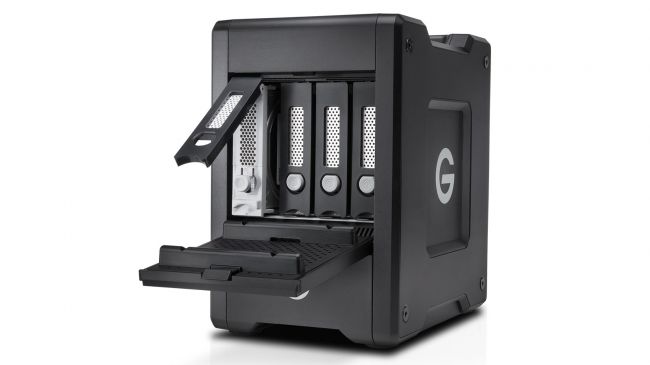G-Technology G-Speed Shuttle 4Bay Thunderbolt 3 16TB review
By Jim Bask
Photographers are always running out of storage space, and there can’t be many of us who don’t need an external drive to supplement the computer’s internal storage.
The traditional choice is to pick an external hard drive, but even the best portable hard drives are pretty slow for bulk image transfers and video editing, and while regular desktop hard drives are faster, even these have their limits. Another option is to invest in SSD (solid state storage) instead, but while this is super-fast, it’s also super-expensive. There is a third option – a desktop RAID system like the G-Technology G-Speed Shuttle. So just how does this compare to the other external storage options?
RAID stands for Redundant Array of Independent Disks. A RAID drive gets a series of disk drives working together to offer more capacity, higher speeds and data ‘redundancy’ to allow for disk failures. There are different types of RAID setup – the G-Speed Shuttle uses RAID 5, which means your data is safe if one of its four drives fails.
Not surprisingly, RAID systems come in pretty big boxes. These not only have to hold all the disk drives but the power supply and various other data control hardware. The G-Speed Shuttle also needed a driver download for use on our test computer, but that was straightforward.
The G-Technology G-Speed Shuttle comes with drives already installed, so you just need to choose the capacity, which starts at 16TB and goes up to 48TB. If you need more, there’s a larger G-Speed Shuttle XL model with eight drive bays, even faster transfer speeds and capacities from 24TB to 72TB.
Be aware that the data redundancy built into RAID systems means that the system storage and the usable capacity are different. The G-Speed Shuttle 16TB model has 4 x 4TB drives, but a usable capacity of 12TB, not 16TB. Click here for the full article.


